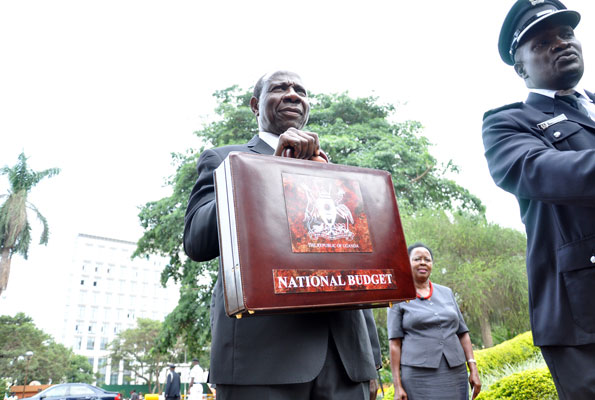Government has set a higher revenue collection target in the 2018/2019 financial year, estimated at about Shs 30 trillion.
According to the National Budget Framework Paper (NBFP) government estimates to collect Shs 15.547 trillion from domestic sources, Shs 15.1trillion from tax revenue while Shs 418 billion is expected from non-tax revenue. This means Ugandans will pay more taxes, The Uganda Debt Network says in its latest analysts.
UDN is a national NGO that scrutinizes how the government of Uganda spends the money it borrows to implement development projects such as construction of roads among others.
The NBFP shows that domestic revenue target is an increase from Shs 15.062 trillion in the current 2017/2018 financial year budget. Out of this, Shs 14.6 trillion is tax revenue while Shs 376 billion is non-tax revenue.
Tax revenue during the 2018/2019 financial year is expected to come from improvement in compliance of taxpayers and strengthening of tax administration through expansion of the scope of withholding tax agents, strengthening the business intelligence function of Uganda Revenue Authority (URA) to detect noncompliance and implementing valuation controls among others.
Despite the increase in the URA tax revenue projection of Shs15.547 trillion for the financial year, the analysts say there are no new revenue sources highlighted apart from administrative areas that seek to further strain the existing narrow revenue sources.
To achieve its domestic revenue target, government intends to undertake revenue reforms that will ensure closure of loopholes in the tax laws, and enhance tax administration efficiency and facilitate tax payer compliance.
Meanwhile, UDN) has proposed a merger of the tax identification number and national identification number as a measure to widen the tax base. Whether this will bring significant results is a matter of debate.
Of concern is that domestic revenue collections still remain low and a challenge to the country’s expenditure and development. URA has continuously been challenged by tax administration and compliance, finding alternative sources of revenue to widen the tax base and taxing the informal sector.
Based on this, the Authority is in the process of completing a Medium-Term Revenue Mobilization Strategy to guide the country’s revenue collections for the next five years.
However, UDN says preparation of this strategy has not been consultative with the different stakeholders, and there is limited transparency for data management on revenue collections both at the national and local level.
Analysts say a collaborative strategy should be extended beyond presumptive tax to property tax and a mechanism for implementing the local revenue and strengthening local revenue data management systems. Also analysts say there need to harmonize mobile money platforms between countries to ensure that transactions undertaken contribute to revenue generation.








